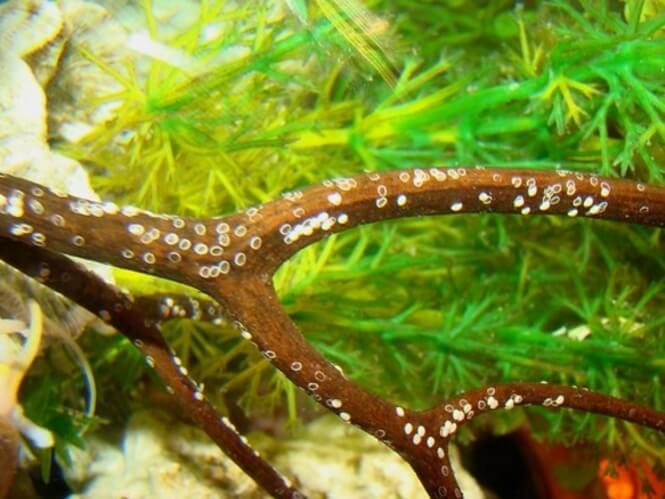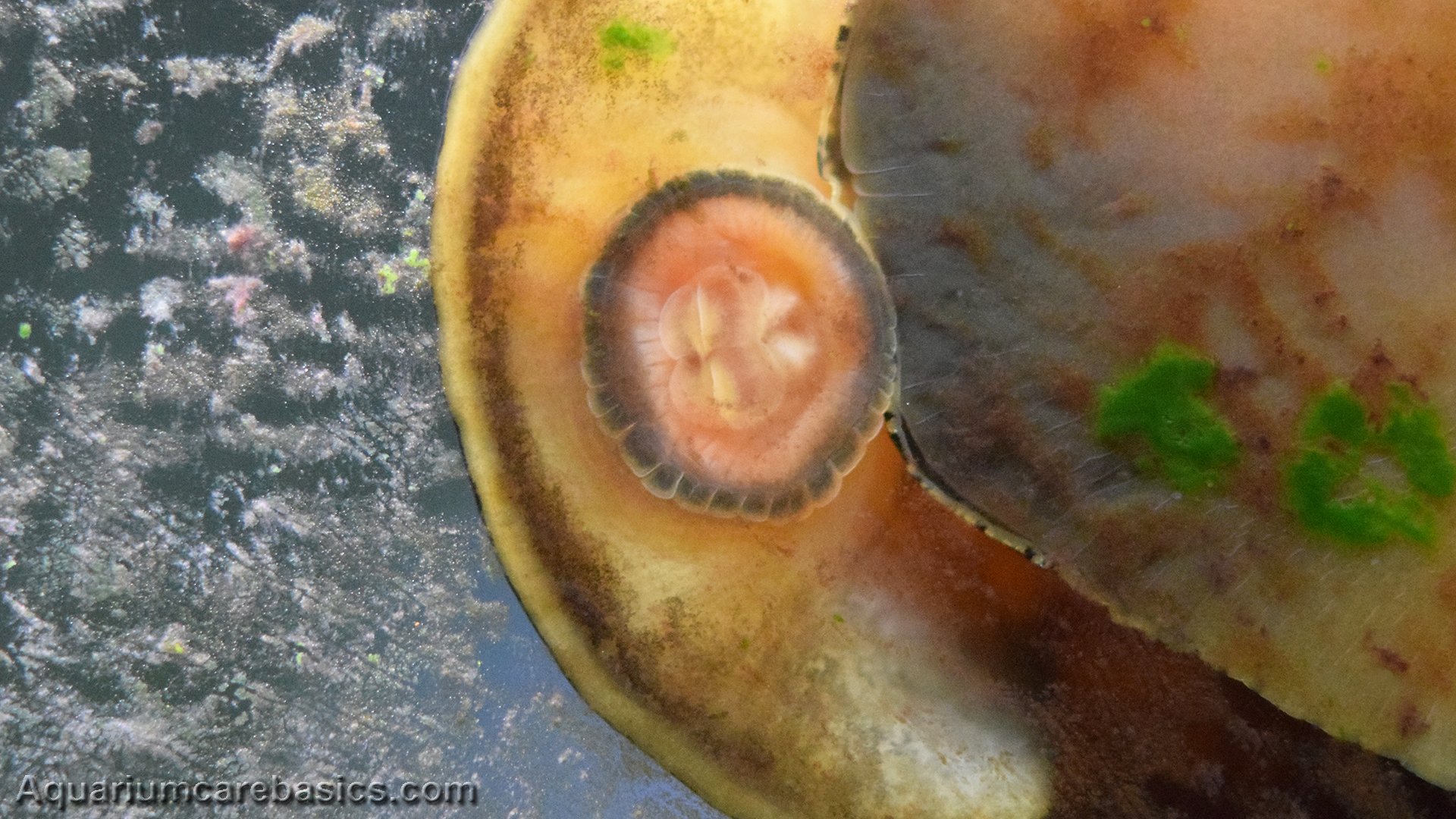

The offspring will become sexually mature at around 6-8 weeks old and start producing their own eggs, continuing the cycle. Their eggs will take around 2-4 weeks to hatch. These snails will also breed asexually and very quickly, meaning that it's very difficult to remove them all once they're in your tank because they can regrow the population back from a single snail. Pond snails are one of the most common pest snails likely to be introduced with new plants as they often lay dozens eggs on leaves. Some hobbyists keep their new snails in a separate container for a few weeks to see if they lay eggs before adding them to their main tanks. Only the females will lay these eggs ready for a male to come and fertilize them, but it's essentially impossible to identify a Nerite snail's sex by their appearance, so you'll need to hope for a male if you want to avoid the eggs. These eggs are tough to remove, even from glass, so any attached to your hardscape should probably be left alone until they dissolve on their own and disappear after a few weeks.

However, despite the fact they won't be able to produce any babies, they will still deposit small, white, hard eggs everywhere in your aquarium. As the adults don't survive in brackish water this makes them incredibly difficult to breed in captivity and impossible for most hobbyists. It's impressive how quickly these snails can eat through algae on your rocks, wood, plants, and glass - which is one of the main reasons why it's so popular in among aquarium hobbyists.Īnother reason for its popularity is due to the fact they cannot breed in freshwater, their young require a brief period of brackish conditions. The Nerite snail is another common aquarium snail often kept for its efficiency in eating algae and inability to breed in freshwater. These snails are not asexual but they are hermaphroditic, meaning they have both male and female sexual organs but need another mate in order to breed. These snails are attractive to shrimp keepers because of their strong colours, they stand out brilliantly against deep green plants in planted tanks much like a shrimp would.Īs well as being pretty to look at, they're also algae eating powerhouses and prolific breeders. You can see more information about the types of Ramshorn snail shells on Cubby's Aquatics. Ramshorn snails come in a range of colours and shell patterns including brown, yellow, blue, pink, red, and white, leopard-spotted, plain, and more. This species of snail can also live in a wide range of salt levels, allowing you to add them as tank mates for Opae Ula shrimp when acclimated correctly. Substrate stirring is the main reason a lot of aquarium hobbyists keep this snail in their tanks this is explained in detail in the substrate stirring section. This is not necessarily a bad thing though, as it allows you to start with a small colony that grows quickly and makes your substrate stirring team even more efficient. The two most common colours are black or cream, and both will typically have a slightly spotty or stripey design on their shell.Īfter adding this snail to your tank, you'll almost certainly start to see some baby snails on the glass within a few weeks. The Malaysian Trumpet Snail (MTS) is a fairly popular species best known for its quick breeding and substrate stirring activities. There are a lot of different species of freshwater aquatic snails but this article will only cover the most common species.

This article will explain both the advantages and disadvantages to help you make your decision. Snails can be great tank mates in a shrimp tank but deciding whether to add snails to your shrimp tank can be difficult.

Which are the best snails for a shrimp tank?.


 0 kommentar(er)
0 kommentar(er)
